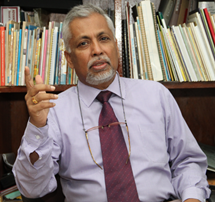"Epidemiologic Transition in Sri Lanka ",Faculty of Health and Social Sciences Seminar, 18th September 2010, Leeds Metropolitan University, United Kingdom.
“Epidemiologic Transition in Sri Lanka “,Faculty of Health and Social Sciences Seminar, 18th September 2010, Leeds Metropolitan University, United Kingdom.
Abstract:
Mortality in Sri Lanka has declined substantially over the latter half of the twentieth century and then well into the new millennium. The decline of mortality during the past one hundred years has occurred at all ages and for both sexes. However, the extent and the timing of improvement have varied. Percentage decreases in rates of mortality have been highest for infants and children. Rapidity of improvement has been greater for females especially after 1960s (Dissanayake, 1987). The major purpose of this paper is to elucidate the recent trends in morbidity and mortality in terms of its continuing time-dimension with the use of existing theory. For this, the paper used Omran’s epidemiologic transition theory (Omran, 1971; 1983) and subsequent additions by Olashansky and others (Olshansky and Ault, 1986; Olshansky et al., 1990) in order to portray the recent trends of morbidity and mortality in Sri Lanka. The analysis is carried out in such a manner that it will attach a predictive power to such trends and consecutively provides a distinctive opportunity to recognize the nature of change occurring in Sri Lanka in relation to morbidity and mortality. Therefore, this study offers a strong foundation for health and other development planners to plan ahead and commence appropriate health and development strategies to contain such changes in an effective manner. The analysis utilized diversity of data sources accessible locally and internationally to position Sri Lanka’s morbidity and mortality trends in a global perspective.

